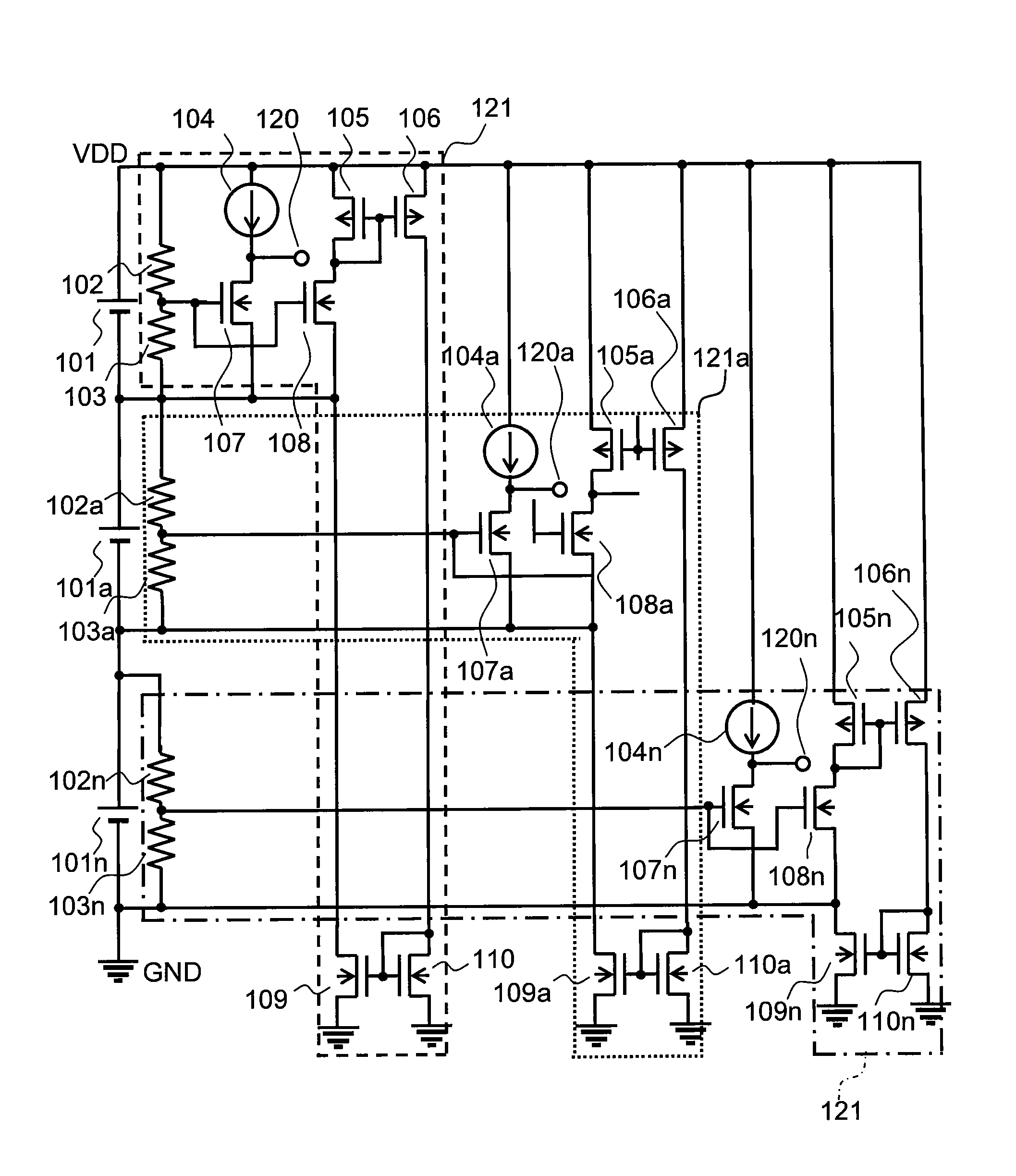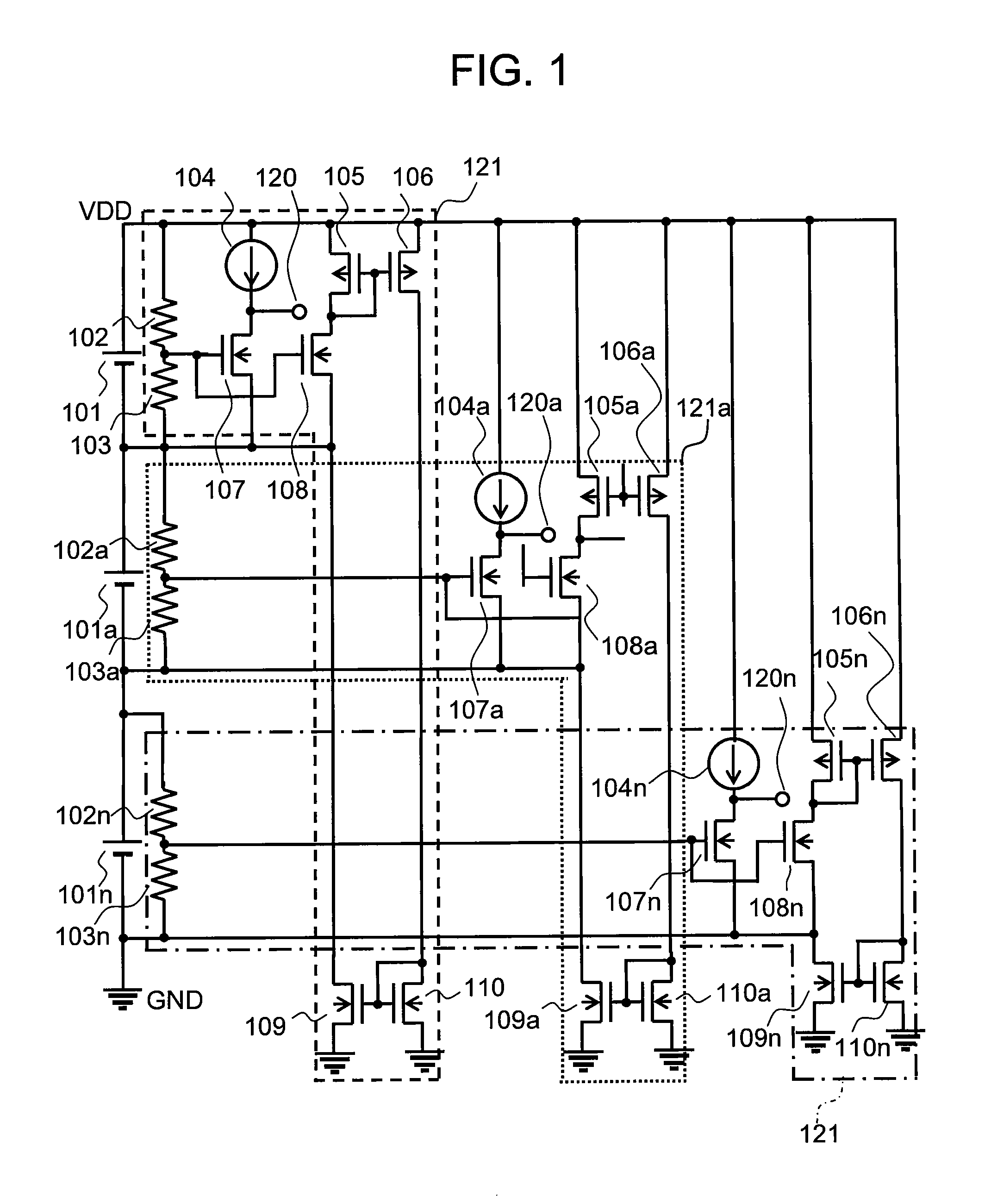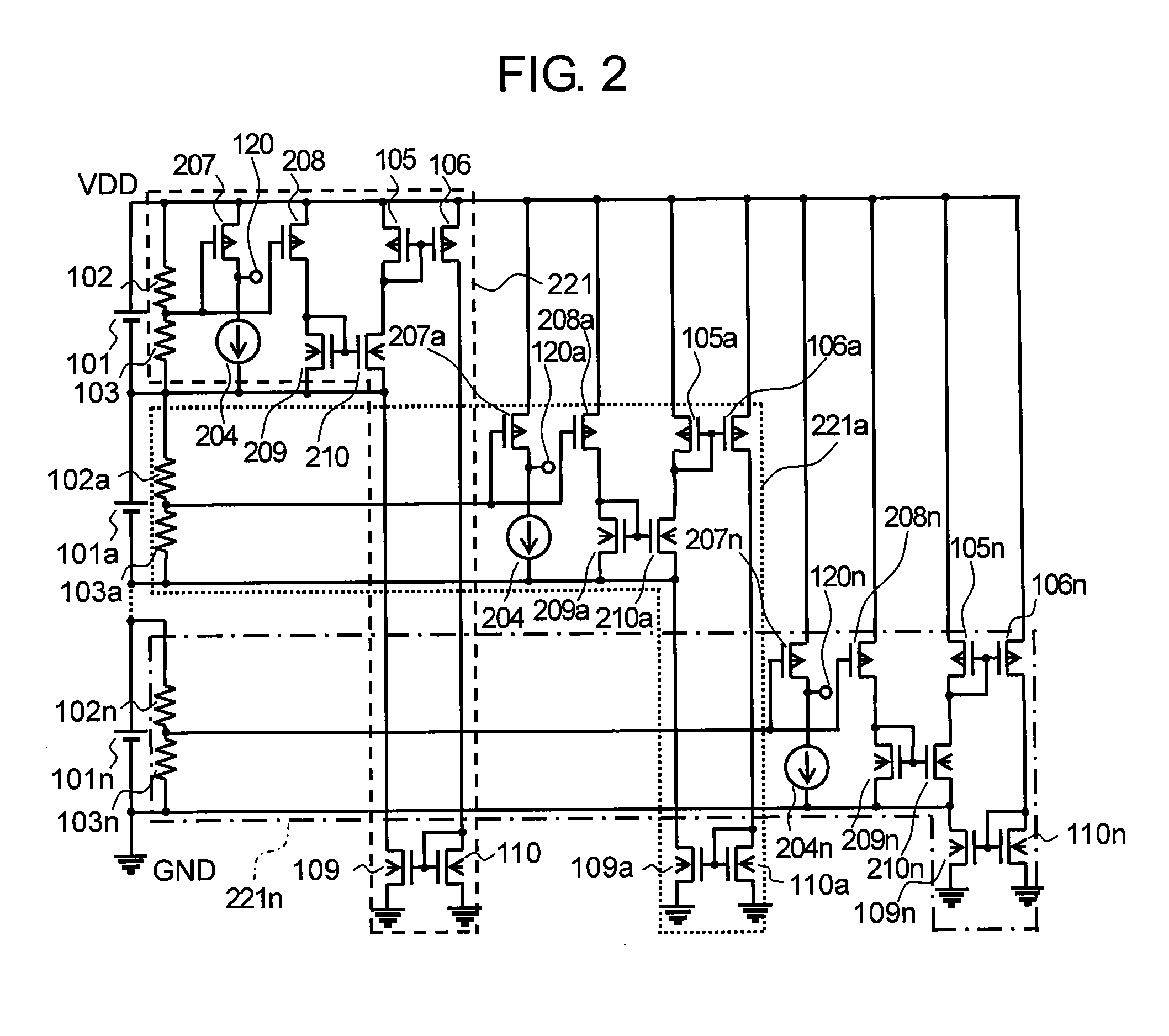Battery state monitoring circuit and battery device
a battery state monitoring and battery device technology, applied in safety/protection circuits, cell components, instruments, etc., can solve the problems of unbalanced voltage between secondary batteries, and stop discharge, so as to prevent the shortened life of battery devices
- Summary
- Abstract
- Description
- Claims
- Application Information
AI Technical Summary
Benefits of technology
Problems solved by technology
Method used
Image
Examples
first embodiment
[First Embodiment]
[0020]FIG. 1 is a circuit diagram of a battery state monitoring circuit according to a first embodiment of the present invention.
[0021]The battery state monitoring circuit according to the first embodiment includes n voltage detection sections 121 to 121n which are individually provided corresponding to the n series-connected secondary batteries 101 to 101n.
[0022]The voltage detection section 121 includes a voltage detection circuit and a current bypass circuit. The voltage detection circuit includes a constant current circuit 104 and an NMOS transistor 107. The current bypass circuit includes NMOS transistors 108, 109, and 110 and PMOS transistors 105 and 106.
[0023]The other voltage detection sections 121a to 121n have the same components as those of the voltage detection section 121.
[0024]Connection in the voltage detection section 121 is described. A resistor 102 has one end connected to a positive terminal of the secondary battery 101 (hereinafter, referred to...
second embodiment
[Second Embodiment]
[0030]FIG. 2 is a circuit diagram of a battery state monitoring circuit according to a second embodiment of the present invention.
[0031]FIG. 2 is different from FIG. 1 in that the NMOS transistors 107, 107a to 107n, 108, and 108a to 108n are changed to PMOS transistors 207, 207a to 207n, 208, and 208a to 208n, and NMOS transistors 209, 209a to 209n, 210, and 210a to 210n are added.
[0032]Connection in a voltage detection section 221 is described. The PMOS transistor 207 has a gate connected to the connection point between the resistors 102 and 103 and to a gate of the PMOS transistor 208. The PMOS transistor 207 has a drain connected to the output terminal 120 and a source connected to the VDD terminal. The PMOS transistor 208 has a drain connected to a drain and a gate of the NMOS transistor 209, and a source connected to the VDD terminal. A constant current circuit 204 has one end connected to the output terminal 120 and another end connected to the negative term...
PUM
| Property | Measurement | Unit |
|---|---|---|
| voltage | aaaaa | aaaaa |
| operation current | aaaaa | aaaaa |
| current | aaaaa | aaaaa |
Abstract
Description
Claims
Application Information
 Login to View More
Login to View More - R&D
- Intellectual Property
- Life Sciences
- Materials
- Tech Scout
- Unparalleled Data Quality
- Higher Quality Content
- 60% Fewer Hallucinations
Browse by: Latest US Patents, China's latest patents, Technical Efficacy Thesaurus, Application Domain, Technology Topic, Popular Technical Reports.
© 2025 PatSnap. All rights reserved.Legal|Privacy policy|Modern Slavery Act Transparency Statement|Sitemap|About US| Contact US: help@patsnap.com



